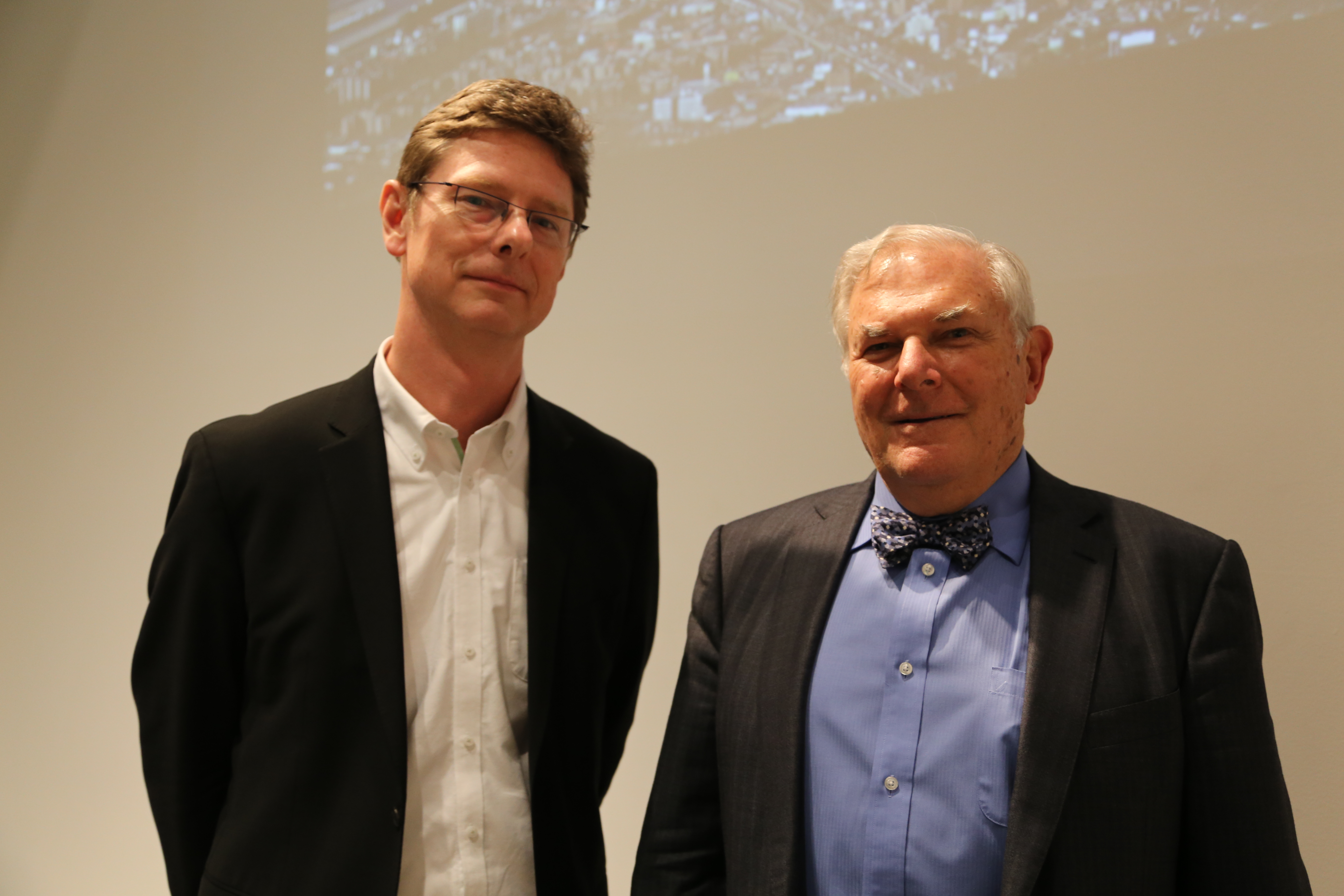by: Julia Adams
Where could we use better public transportation? Swaths of the Bronx and Queens are underserved, particularly in Hunts Point, Soundview, Spuyten-Duyvil, and all of Southwest and Northern Queens. There’s also Red Hook, Greenpoint, and South Brooklyn neighborhoods like Mill Basin, Marine Park, Seagate, and Bergen Beach. Lines like the 5/6, A/C/E, D/B, F, and 2 (the worst line according to Straphangers) are at capacity or repeatedly delayed. Not to mention getting to the airport. As Alexander Garvin, president and CEO of Alex Garvin & Associates, professor at Yale School of Architecture, and former NYC Department of Design + Construction commissioner, said at “Light Rail for the Brooklyn & Queens Waterfront” at the Center for Architecture on 10.30.2014: “When you look at the transportation system, it’s one story; when you ride it, it’s another.”
The MTA is in the middle of major infrastructure projects: the extension of the 7 line to Hudson Yards, the Second Avenue Subway, and East Side Access. Where should we build next? And what if we look not only at demand, but also at potential demand. Where can we build that will promote development? Where can we build that has enough developable space that the potential tax revenue increases over the course of 25 years will cover the cost of a major transportation infrastructure project?
“I’ll never get someone to fund a subway,” said Garvin, “A bus, there aren’t enough people [transported].” Instead, he has a plan to build a streetcar from Astoria, Queens, to Red Hook, Brooklyn. The proposed route will go from 21st Street in Queens down Kent Avenue, to the IKEA Plaza in Red Hook. According to Garvin, along this corridor in Queens there is enough unused or adaptable space that the increase in taxes due to development over 25 years will equal the cost of the project itself. His proposed cost, depending on whether the street will have to be rebuilt, is $20-80 million per mile; that’s $100-400 million to connect Astoria to Williamsburg, and about double that to Red Hook. As one audience member said, these numbers are rounding errors when talking about East Side Access or the Second Avenue Subway. Using Tax Increment Financing or TIF, the streetcar will pay back the cost to the city of New York in 25 years; from there, the city will reap the benefits.
Why not use the significantly cheaper system already in place – the bus? A Bus Rapid Transit (BRT) line would be similarly fast, running with few stops. Because BRTs require an exclusive lane, Garvin is concerned it would incite neighborhood disapproval and traffic congestion. A regular bus would be too slow and carry too few people. Alternatively, a bus line is adaptable to patterns of development and movement. Meanwhile, the beauty of streetcar tracks is that buses, cars, and bikes can ride over its trackschanges can take place over them, while a streetcar provides permanent infrastructure. In New York Times critic Michael Kimmelman’s words, a streetcar would signify “a tangible, lasting commitment to urban change.” Were the Brooklyn-Queens waterfront streetcar successful, the city might consider building in a less tax-profitable, but higher-need corridor, such as between the 2/3 and 4/5 in the Bronx. At the moment, Garvin estimates that this corridor does not have enough developable space to be a desirable investment for the city.
As unveiled before our eyes, the Williamsburg waterfront has undergone a revolution, the Domino Sugar complex being the latest leg. When you look across the Hudson, it’s a similar picture: tall buildings populate the New Jersey waterfront, purposed by the Hudson-Bergen light rail.Astoria’s waterfront, with equally great views but a mile from the N/R elevated subway line, consists of low-density housing with few businesses or stores. Garvin envisions medium-density, R7 zoning for the neighborhood, not built-up enough to crowd out local character, while still attracting, accommodating, and producing more people and more capital.
In Garvin’s plan, construction would not displace current residents. Still, the city must protect Astoria denizens from displacement, if not by incoming towers, then by gentrification’s towering rents. Citing cities like Houston, which maintained rent costs as it grew by half a million over the last decade, Garvin says it will be possible to maintain rents by keeping up with demand; it won’t require building roofs, but changing the law. One idea was to repurpose the many car garages in Queens into rentable units. Other ideas, like 9×18, propose ways to build without knocking any buildings down and displacing residents.
Williamsburg costs are so high, in large part, because it functions as a commuter town to high-paying Manhattan jobs. What’s exciting about the Brooklyn-Queens streetcar is that reinforces the outer-boroughs’ independence; it disrupts the boomerang of New York City transportation, always coming back to Manhattan, and with it, the centralization of the city’s capital. At the same time, it’s a privilege to not need access to Manhattan’s job pool; while a streetcar is being built along with Brooklyn-Queens waterfront, residents of the poorest borough, the Bronx, will still be held back by poor access, and Staten Island will remain the only borough without a subway.
Julia Adams is a Public Information Assistant at the Center for Architecture.
Event: Light Rail for the Brooklyn & Queens Waterfront
Location: Center for Architecture, 10.30.14
Speaker: Alexander Garvin, President and CEO, Alexander Garvin & Associates, and Professor Adjunct, Yale School of Architecture
Organizers: AIANY Transportation and Infrastructure Committee









